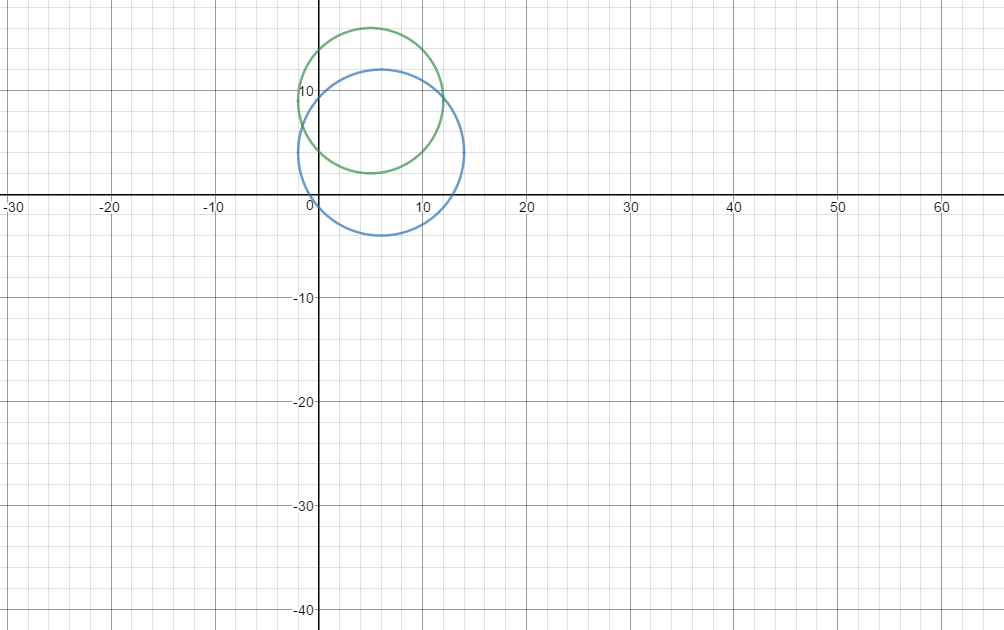Two circles have the following equations: #(x -6 )^2+(y -4 )^2= 64 # and #(x -5 )^2+(y -9 )^2= 49 #. Does one circle contain the other? If not, what is the greatest possible distance between a point on one circle and another point on the other?
1 Answer
The farthest distance that between to points on the circle is the sum of the distance between the centers and the two radii:
Explanation:
Here is a graph of the two circles:

The circles overlap but the larger circle does not contain the other. This could have been deduced by the following process.
We assign
For circle 1:
For circle 2:
Compute the distance,
If the larger circle contained the smaller, then the distance between the centers would be less than difference between the two radii, 1. This is not the case.
The farthest distance that between two points on the circle is the sum of the distance between the centers and the two radii:

